1. State Government Ministers
The outcry from the media, public and players during the summer was ill-informed and a little nauseating. “Take the Australian Open out of Sydney and share it around the country!”
If only it were that simple.
You can’t run a tournament in this country unless you have a major financial backer. More specifically, Australian Golf Digest understands you can’t run an Australian Open unless you have $3 million injected into it. Destination NSW continues to do just that – throwing money at the country’s marquee golf event when others won’t. If you’re in charge of running the flagship event, why wouldn’t you secure its immediate future by locking in a long-term deal with a state government that’s willing to spend?
If you need a second opinion, just ask the promoters of the Australian Masters what happens when the state government withdraws its cash and says bye-bye…
Make no mistake, the biggest power players in Australian golf right now are the governments of our respective states vying to host major tournaments. It’s why those hoping to see the Australian Open return to the glorious fairways of, say, Royal Adelaide Golf Club in the near future best not get too excited. With the South Australian government again tipping in $500,000 to host the Women’s Australian Open – an LPGA-sanctioned event that attracts the world’s best players – convincing it to contribute six times that amount to bring the men’s Open to the City of Churches will be no easy feat, particularly if they can’t guarantee top-20 players.
Still not convinced of the importance of state government influence? Name three companies that’d be willing to cough up that sort of dough for a week of exposure when they can pay a lot less to get their branding on the guernsey of local AFL team Adelaide Crows for an entire season? Take your time…
“I think in an ideal world you’d like to move the (Australian Open) around the country, a la the Open Championship in Britain and the US Open,” says Golf Australia boss Stephen Pitt. “But for Australian tournaments, the relationship with state governments is pretty important and often that means stability in terms of where it’s held. We are in Melbourne in 2020 and 2022 and there’s a nice thought to sharing it around the country, but that’s one of the trade-offs you have to make. I think for us the trade-off has been we’ve seen the tournament grow and we’ve had a really strong, stable relationship with the New South Wales government. It’s important.”
Important is an understatement. Such relationships are mandatory in today’s economic climate.
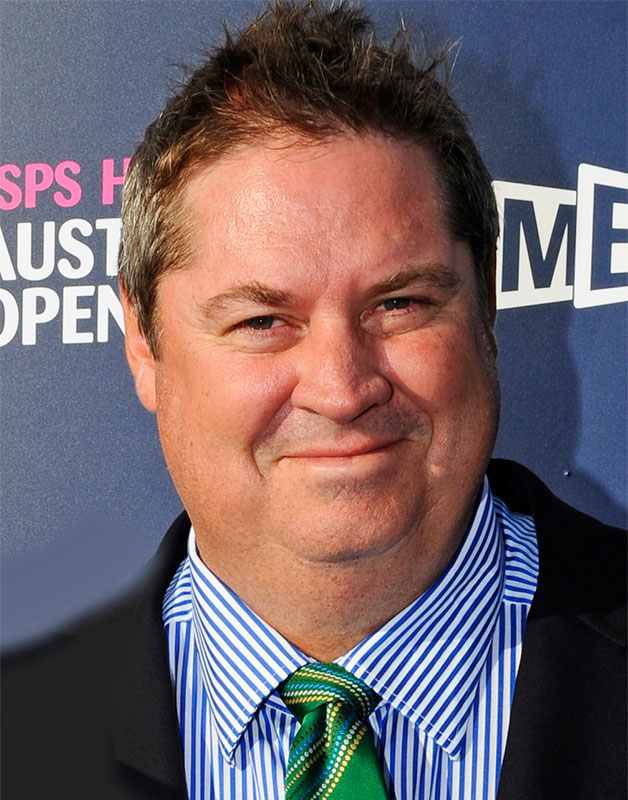 2. Stephen Pitt
2. Stephen Pitt
In 20 years time when golf in Australia is operating in unison across all levels, we will look back and say, “Thank God One Golf happened.” We will probably also tip our cap to Golf Australia chief executive Stephen Pitt, the ringleader pushing for the amalgamation of all the state bodies under one national umbrella. For Pitt, such a move will be the start of what golf can truly be – the most efficient, streamlined and unified governance structure in Australian sport.
“This will deliver great efficiencies for Australian golf, allow us to maximise revenue and ultimately invest more back into growing the game,” says Pitt, who has some mighty powerful ties in the world of golf. “It will create a more attractive system for our partners and I’ve no doubt we’ll grow our sponsorship revenue very significantly in the future.
“Most importantly, though, it will deliver an alignment and co-ordination between Golf Australia and the state and territory bodies that hasn’t previously existed. This is the most critical thing for Australian golf – to have really strong, aligned decision-making processes that share a vision so we ensure we are working in harmony towards one goal, not many, as has historically been the case.”
Pitt has flown hundreds of thousands of kilometres in his attempt to bring about One Golf, which still needs Golf NSW and Golf WA to jump on board to complete the mission. And while his legacy includes helping the Australian Open avoid bankruptcy, getting One Golf over the line will be the most important deal anyone in his position has ever struck.
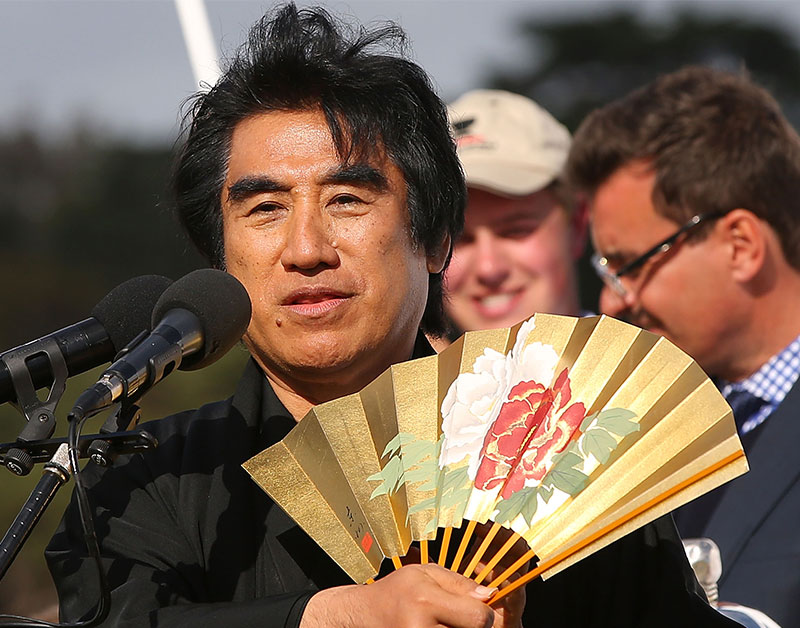 3. Dr Haruhisa Handa
3. Dr Haruhisa Handa
Golf’s international man of mystery. You might well have heard of Dr Handa as a golf follower. His ISPS group holds the naming rights for many professional golf tournaments around the world, including the Women’s Australian Open, World Cup of Golf, World Super 6 Perth and, most recently, the Vic Open, as well as a host of big amateur tournaments and senior events. The Japanese businessman, philanthropist, artist and tenor of some fame, who has recorded his own music, studied literature, runs dozens of companies and advises the Cambodian government. He is also an honorary Australian (he calls Perth his second home), and a golf nut who often plays with the prime minister of Cambodia.
But the ISPS arrangements are not like your common garden-variety naming rights sponsorships. They are not seeking commercial gain from the sponsorship; rather they seek to promote the game for the game’s sake. ISPS stands for International Sports Promotion Society and that is a good description of what the organisation does. Dr Handa does it out of love for the game, and what it does for people. He sees it as a powerful, positive influence on people’s lives. Hence, ISPS backs a string of tournaments and players around the world, including on the European Tour.
“It’s a wonderful sport, a gentleman’s sport, (with) the same rules all over the world,” he says. “A good golfer, a bad golfer and ordinary golfer can enjoy it the same way using the handicap system. You don’t always beat the opponent, you are challenged by yourself.”
Dr Handa didn’t play golf until he was 37. He had been studying literature in Japan when it came upon him that he needed a change. “I wanted to do something I hadn’t done yet.”
Luckily for Australian golf, he hadn’t yet tipped a truckload of cash into the sport. But, boy, is he making up for lost time. While nobody really knows where he derives his wealth, we don’t care. Without him, we may not have a summer of golf in this country. – with Martin Blake
 4. The Hon. Daniel Andrews
4. The Hon. Daniel Andrews
In his victory speech of 2014, the newly elected Premier of Victoria Andrews declared, “The people of Victoria have today given to us the greatest of gifts, entrusted to us the greatest of responsibilities and bestowed upon us the greatest of honours. We will not let them down!”
Golfers of the Garden State certainly have no reason to complain after voting in this self-confessed golf tragic, who has given the green light to millions of dollars of government grants to the sport he loves.
Andrews, who was re-elected for another term in November, will continue his campaign to give our fairways a bright future, promising to upgrade golf clubs across the state and invest in stage two of the ‘Home of Golf’ project at Sandringham Golf Club.
The Kingston Heath member says golf in Victoria generates $849 million for the state’s economy and supports 6,900 jobs – making it the sport’s capital in Australia.
“More than 300,000 Victorians play golf at more than 350 courses across the state and we want to extend our reputation as the golfing capital of Australia,” he says.
“We’ve secured the 2020 and 2022 Australian Open golf tournaments, and we’ve secured the 2019 Presidents Cup – the third time we’ve hosted this prestigious tournament. But we want to help more golf clubs across Victoria expand and grow, and attract even more people to the sport.”
Prior to his re-election, Andrews promised to provide $2 million in grants for minor upgrades and equipment to golf clubs right across Victoria, with a number of priority projects earmarked for immediate funding. “We’ll also provide $160,000 over four years for four golf industry scholarships per year – these will cover golf journalism, golf professional, women’s greenkeeper and golf course designer scholarships.”
If only every state had a golf nut calling the shots. As for Andrews, when he’s not fixing Victoria’s courses, roads, education and health systems, he’s giving Tiger Woods a tour of Melbourne and studying his favourite pastime by delving into his copy of Alister MacKenzie’s The Spirit of St Andrews.
“I read books on golf course architecture. I’m a total golf tragic,” he says.
5. Adam Scott
The fallout over his absence this summer said it all. Australia’s lone Masters champion and the torchbearer for the sport here in the post-Greg Norman era took a summer off. Scott received minimal ‘heat’ for it, largely because it was a well-earned rest after so many years of appearing on home turf.
The official line was: given he didn’t qualify and wasn’t selected for the World Cup of Golf, he was taking the opportunity to rest, refocus and recalibrate for a crucial 2019 campaign – the last in his 30s. Had he been at Metropolitan, Scott said, he would likely have added more starts. However, behind the scenes theories abounded as to whether his stance reeked of a deliberate boycott over the pecuniary treatment tournaments afford other, less loyal players – a hypothesis that gained traction when Scott appeared in Sydney at a function for his foundation on the Monday of the Australian Open but ventured nowhere near the tournament. But in the eyes of the golf public, Scott quite rightly received a pass for staying away from the golf course this summer.
So does Scott wield influence? Oddly, it was perhaps in his absence that we learned the answer is: yes.
 6. Jay Monahan
6. Jay Monahan
A ‘suit’ in Florida is among the most influential people in Australian golf? Yes, because when the mighty United States PGA Tour sneezes, world golf catches a cold – and the tour’s commissioner Monahan is the man holding the tissue box.
And how much does Australia mean to the PGA Tour and its push for world-tour domination? We’re about to find out. The upcoming Presidents Cup in December signals yet another visit Down Under during a time when the world’s largest circuit has noticeably spread its tentacles. In recent years the PGA Tour has ventured into China, Malaysia, South Korea and now Japan. There is already history here, with past Web.com Tour (then known as the Nationwide Tour) events held here. But it’s the big-ticket item we’d like to see.
Is it possible? It depends on several factors, including scheduling, sponsorship, prizemoney and the level of the tour’s desire to further expand. What isn’t in question is the quality of the potential venues. Tiger Woods keeps saying how much the players love it down here and how they wish they could play courses the calibre of the Melbourne Sandbelt venues more often. Well, Tiger, you can. But it’s up to your mate Jay!
7. Jason Day
Ah, Jason Day. The uber-talented, workaholic perfectionist with an uncanny knack for illness and injury and a divided following in his home country. Seeing as it’s influence we’re talking about here, it is worth noting how Day’s comes almost entirely through his playing feats. He is a MyGolf ambassador for the Golf Australia organisation, but his most visible influence is by being one of the 15 or so best exponents of his skillset on the planet.
At 31, and perhaps about to strike peak career age, Day is in a bind. He makes his home in the United States but his most ardent following is on the other side of the planet – a place he rarely visits. Which message does he want to convey, and which image does he hope to portray? The signals are all too often mixed, although simply spending more time here would send the right message in that department. Yet Australia, particularly in his youth, doesn’t hold the most pleasant memories for the Queenslander. Plus, his life and family are largely in Ohio now and America is where he plies his craft. But a once-a-year return home for a week or two isn’t asking that much, is it?
 8. Greg Norman
8. Greg Norman
As if the bloke who can hook up a phone call between the prime minister of Australia and the president of the United States wasn’t going to make this list?
Not that he has ever struggled for headlines but since his world-exclusive cover shoot for Australian Golf Digest’s August 2017 Get-Fit Issue, the Shark has been popping up everywhere with his ripped 64-year-old frame on show. But away from the protein shakes and Instagram posts, the one-man brand has been attacking life like only he can, opening golf courses around the world and signing off on multi-million-dollar business deals for the Greg Norman Company, which now has an estimated net worth of $500 million. Norman now transcends the game of golf, with more than a dozen companies around the world bearing his name and the iconic shark logo. His internationally recognised brand boasts more than 100 golf course designs across six continents, a global real estate collection, award-winning wine, golf-inspired lifestyle apparel and a diverse investment division. He was even recently appointed as Vietnam’s Tourism Ambassador, such is his pull in Asia.
And he still doesn’t mind throwing in his two bob’s worth on the state of the game Down Under. Late last year, the two-time Major champion criticised the disjointed ownership among Australian golf’s premier tournaments. “It’s always been this fight; a fight with the (now defunct) Australian Masters, with the Australian Open, with the Australian PGA Championship, with the (defunct) Holden Classic,” he told AAP.
“A collaborative effort (was attempted) for years but they could never do it; I don’t know why. I was in the middle of it for 25 or 30 years, and it’s crazy it still continues.”
But here’s the real kicker… a pro golfer turned businessman with so much muscle power – both literally and figuratively – around the globe has never received a call for help from Australian golf.
“We’ve never been asked (for advice),” he confirmed.
Even the great Greg Norman can’t tee up that call, it seems…
9. Keith Pelley
European Tour boss Keith Pelley has expressed a desire to have more involvement in Australian golf. On the heels of the August 2018 announcement that the Vic Open would be co-sanctioned by Europe, chief executive Pelley told the “Inside The Ropes” podcast that he was open to expansion past the existing three events.
The Canadian expressed interest in the national championship, but also said the tour’s interests reached beyond the top-tier Australian tournaments.
“Obviously our ties are very strong… the Australian PGA is on our schedule and now Victoria and Perth,” Pelley said. “[PGA of Australia chief executive] Gavin Kirkman and I shared e-mails yesterday on the schedule and we met at the Open Championship in Carnoustie and talked about how we can work closely together.
“In terms of the Australian Open, we’d love to be involved in it. But the Australian Open is a different event with a different promoter. We’ve had conversations and anything could happen down the road. We’d also love to have a Challenge Tour event; it won’t be for the 2019 season, it would be 2020 at the earliest, but it’s safe to say that the relationship we have with the PGA Tour of Australasia is incredibly strong.
“I have a tonne of time for Gavin and his vision and we’re going to try to help and work with Gavin and his team moving forward.”
Pelley said the European Tour’s drive towards becoming involved with the Vic Open was born from feedback from the players during last year’s ISPS Handa World Super 6 Perth.
“The players overwhelmingly talked to me about, ‘Is there any chance we could have another tournament [in Australia]?’” he said.
“[They said that] coming all the way to Australia is such a long way [for one event]. That’s when the conversation began with Victoria and we are delighted to make this announcement to be involved in it. We wanted back-to-back tournaments in Australia, the first time since February 2004.”
If only his equivalent on the PGA Tour was as excited about bringing his circuit Down Under…
– with Mark Hayes
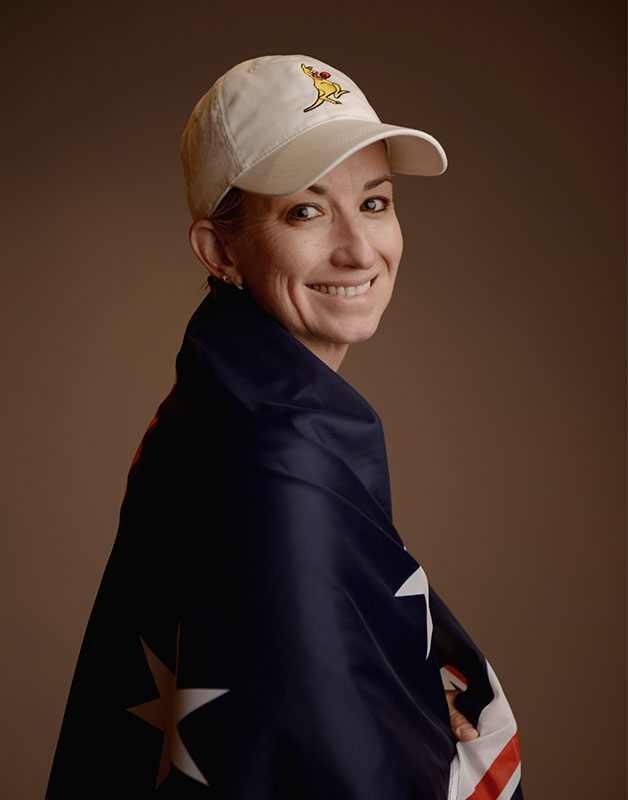 10. Karrie Webb
10. Karrie Webb
Australia’s most prolific Major champion burst onto the world stage and dominated at an early age, yet Webb’s most significant impact may still be to come. To her eternal credit, the girl from Ayr decided to take on a mentoring role for young Australian golfers while she was still competing with a full LPGA schedule – famously hosting Karrie Webb Scholarship winners at the US Women’s Open on an annual basis. It was just one way Webb established ties with the next generation of rising female talent. Yet what she saw concerned her.
“My fear for the young girls of today is that it’s either Lydia Ko or fail,” Webb said of the growing pressure to quickly reach an elite level. “I have seen it with the young Aussie girls – they feel like if they’re not ready to play on the world stage at 18, then they’re past it. I’m 44 and still playing. In golf, fortunately, you can have a long career if you choose to and you can peak at an older age. I just think mentally right now kids are being told that they won’t peak in their 30s – if they don’t peak when they’re 22, they’re never going to succeed.”
11. Gavin Kirkman
Gavin Kirkman has always been a people person. When he landed the chief executive officer role at the PGA of Australia in March 2017, he didn’t arrive without knowledge of the challenge that lay in front of him. Kirkman had been the PGA’s national chief membership officer for the previous six years and knew first-hand the importance of successfully leading a huge network of staff across the country.
“I am very excited to be in a position to truly make a difference by supporting and building programs for the unsung heroes of the game: the vocational professionals,” he said on his first day of the job. It’s an ethos that hasn’t wavered.
Kirkman has gone on to play a leading role in ensuring the PGA of Australia remains a world leader in golf education and customer service, while at the same time building more pathways for young Australians to reach the pinnacle of the sport professionally. “It’s the people who work tirelessly across the country and behind the scenes every day to keep this great game great,” he says. “These members are small business owners, employees and trainees who are the face of the game and critical to growing participation through national collaborative programs, in providing education and in the day-to-day commerce of the industry. I am committed to building a culture at the PGA that engenders trust, progress and collaboration at every level.”
Kirkman has also seen the tournament scene flourish under his watch, with the Australian PGA Championship, World Super 6 Perth and Fiji International all drawing healthy fields in recent years on the back of co-sanctioning agreements with the European Tour.
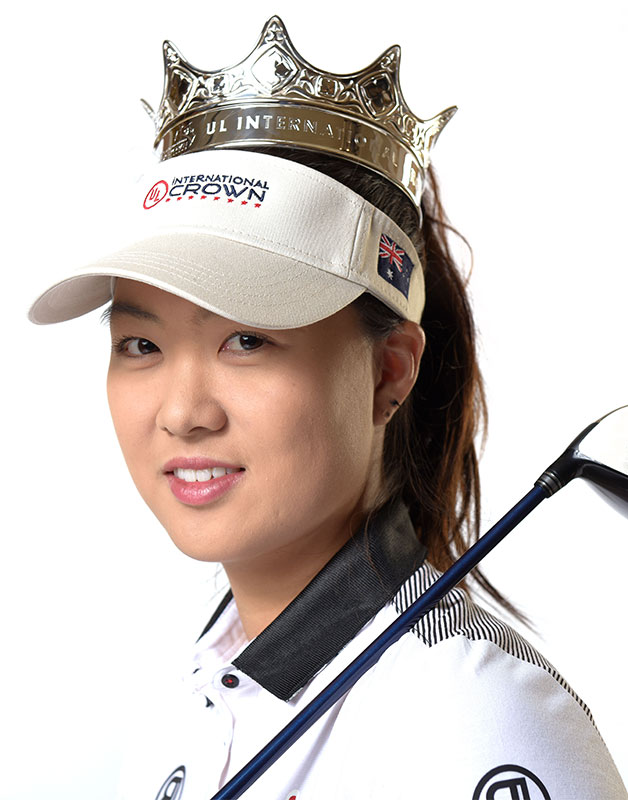 12. Minjee Lee
12. Minjee Lee
No Australian female golfer has come close to ascending Mount Karrie since the inimitable Ms Webb dominated world golf in the years either side of the turn of the millennium. Yet of those who might, Lee comes closest. The West Australian reached world No.5 status in 2018 before dropping one rung to end the year ranked sixth after a stellar and ultra-consistent campaign. She owns a game and a poise that is a potent combination on the LPGA Tour.
Much like Adam Scott, Lee could find herself bestowed with the role of showing the next wave of golfers the way forward. The pair makes for an interesting comparison: largely shy, private people whose class shines in not just their on-course prowess but in the way they conduct themselves. If she takes the part, Lee’s influence could span generations – and new generations, perhaps less familiar with the game – potentially extending across cultures given her family background.
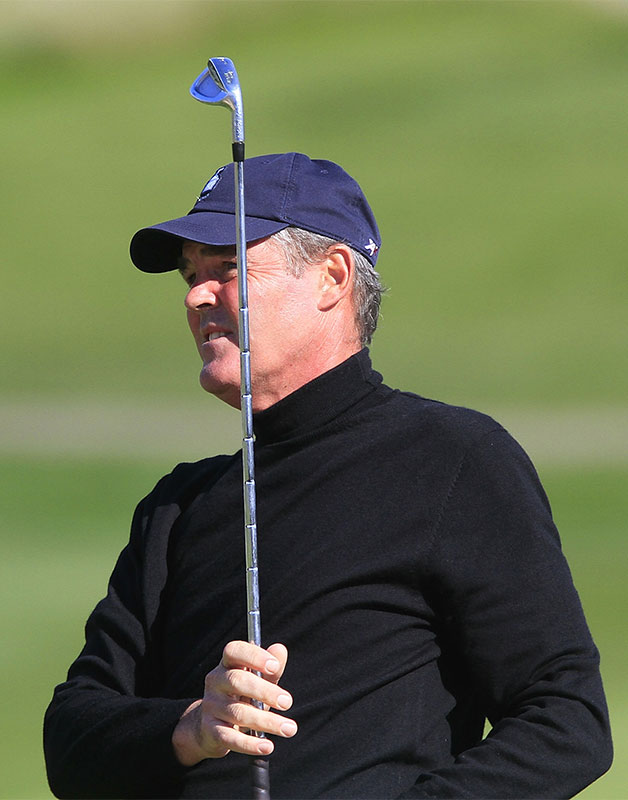 13. Michael Clayton
13. Michael Clayton
Television, magazines, newspapers, websites, podcasts, social media channels – you name it, Mike Clayton’s on it and sharing his opinion on something golf. The former European Tour winner-turned golf course architect seems to be the go-to man for a take on just about anything these days, but it’s golf course architecture where his real passion is. A director of Aussie design firm Ogilvy Clayton Cocking Mead, Clayton’s work often polarises opinion, with the 61-year-old having left his fingerprints on a host of iconic courses both in Australia and overseas, including Peninsula Kingswood, Royal Queensland, Lake Karrinyup, The Grange, Commonwealth, Royal Canberra and The Lakes. The self-confessed Alister MacKenzie fanatic also co-designed Barnbougle Dunes with Tom Doak in what is perhaps his finest contribution in Australia.
With a host of fans – and just as many critics, don’t worry – always eager to engage in conversation, ‘Clayts’, to his credit, is always happy to oblige. Some of his most recent musings include leading public calls to roll back the golf ball, communicating the need for proper tree management on courses, and stamping out the dark art of backstopping on tour (when players, consciously or not, don’t mark their balls around the hole and therefore give other players a safety net to hit and stop their own shots), or as he eloquently puts it: cheating.
14. Christian Hamilton
When news broke about a world-first “All Abilities Championship” being run concurrently with the Australian Open in Sydney last year, golf purists may have thought it was a gimmick. Are the same fairways of the country’s marquee tournament, at the same time no less, really appropriate to hold a specialised amateur event?
However, bringing golfers with disability from all around the globe into the mainstream of world golf for the first time would prove to be no sideshow. In fact, the All Abilities Championship was the hero event of an otherwise flat Aussie summer of golf that lacked PGA Tour starpower. Any feelings of frustration quickly turned to inspiration as an all-ability field – including those with prosthetic limbs, physiological and neurological disorders – teed it up with the pros and put on a showcase of golf never seen before. Holes-in-one and 250-metre drives off one leg even had the pros in disbelief before they branded the concept “genius”, and the move golf needed to make to spearhead inclusiveness in sport.
The man behind it? Golf Australia’s senior manager of inclusion Christian Hamilton, a PGA professional with 10 years’ experience coaching those less fortunate. Working in conjunction with the European Disabled Golf Association, Hamilton ticked off the first major box on a much wider mission.
His end game? Getting the sport of golf in the Paralympics.
With golf’s application for inclusion in the 2024 Paralympics in Paris rejected recently, the R&A and USGA have announced a new worldwide ranking system to help push their cause for inclusion in the 2028 Games.
Hamilton’s own inclusion on our list is not recognition of his influence on golf, rather his influence on people’s lives. He’s making people feel part of society by taking the power of golf to them. Just ask Melburnian and All Abilities competitor Mike Rolls what it means to be included.
Rolls, who plays off a 5 handicap at The National, has been a passionate advocate for the sport.
“It’s a bit surreal,” Rolls says. “I think about where we’ve all come from, such a low point. I got sick when I was 18. I contracted meningococcal septicaemia. I breathed in at the wrong time, something as simple as that, and that resulted in the loss of my legs, and I think back to those hospital days and what I looked like, down to 47 kilos. So now to be at the Australian Open playing in the All Abilities Championship is a very special moment.”
Rolls said playing golf had played a significant part in his recovery, notably with his mindset. “I think everyone understands how tough golf is. Golf is a very hard game to play when you’ve got all your legs and all your arms and no issues whatsoever. I guess this is a display of what you can do if you work hard.”
Hamilton’s hard work continues.
 15. Ritchie Smith
15. Ritchie Smith
If you haven’t noticed the impact West Australian golfers are having then you haven’t been paying full attention. Blessed with an array of elite golf courses and an agreeable climate, Perth and surrounds is more than merely an attractive locale. And one of the reasons why names like Minjee Lee, Hannah Green and Min Woo Lee are foremost in our golf consciousness is largely thanks to Smith.
A gifted player throughout his PGA of Australia traineeship, Smith turned to coaching rather than competing and the ranks of Australian golf, in the west in particular, have felt the positive influence. Smith’s edge might be his inquiring mind and being unafraid to innovate. When he took over as Golf WA’s men’s coach in 2015, Smith quickly stated he intended to change the team’s culture, train a little differently and make the program more holistic.
That’s all on the surface; what lies beneath is a cheeky determination. When asked once why WA was rising in the broader sphere of Australian golf, Smith simply smiled and said: “Well, why shouldn’t we be?”
16. Trevor Herden
Herden has seen it all during his time running and directing golf tournaments. It’s a largely behind-the-scenes role but it’s a task that usually only receives attention when things go wrong. Few are the times a player has sought Herden after a round to pat him on the back, shake his hand and say what a phenomenal set-up the field had just encountered. Which means it takes a thick skin as well as knowledge and ability to do the job well.
Fortunately Herden has all three qualities. The Australian Open and Women’s Australian Open are his primary moments to shine, while Herden has the experience of three years spent in the US to call upon as well as the savvy diplomacy that comes from caddieing for a time. But it’s the one thing that Herden and co. can’t influence that often defines success or failure: the weather. And the flip side of capricious conditions is how the nature of the layout that’s been carefully primed for tournament play can change in a heartbeat. Tempestuous weather, tempestuous golf courses and tempestuous players – it’s not a job for the fainthearted.
17. Tom Doak
Doak’s influence is very much here and now, as his redesign work stamps his name on our golf landscape. Yes, he gave us Barnbougle Dunes (in collaboration with Mike Clayton) a decade-and-a-half ago along with St Andrew Beach shortly afterwards, yet it’s almost like the appreciation of Doak and his work didn’t reach full volume until he began tinkering with the likes of Royal Melbourne, Royal Adelaide, Yarra Yarra and more.
‘Tinkering’ is a frivolous term, of course. Doak’s work is much more sophisticated and serious, although in many cases it is the understated nature of his contributions to our best courses that seals his reputation as one of the best course architects. Does Royal Melbourne’s East course look drastically different? No. But is the layout better for his input? Yes. Subtly, but yes. Elsewhere, the rejuvenated Concord and Doak’s work so far at Yarra Yarra are more obvious but importantly both are winning almost universal praise.
Next up: The National’s Ocean course. We’ll know soon enough the depth of his influence there.
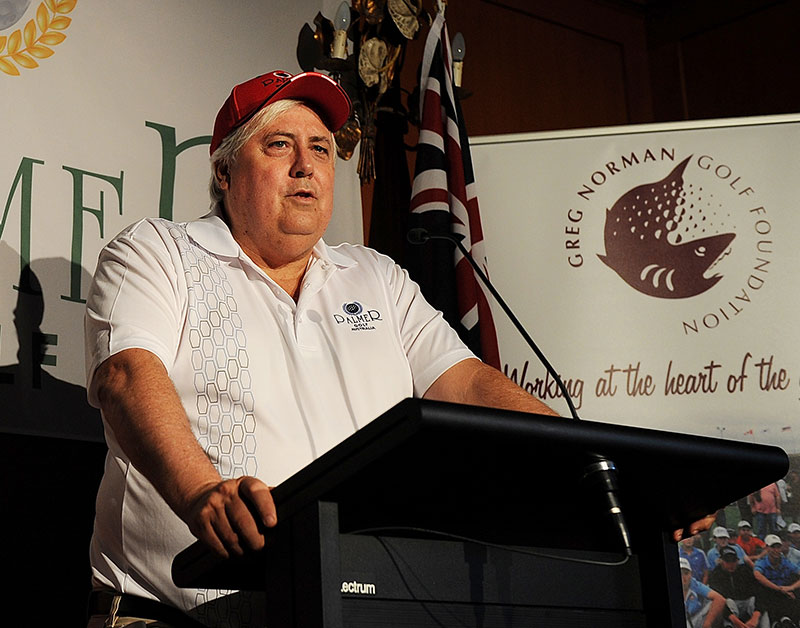 18. Clive Palmer
18. Clive Palmer
Genius or goose? Revered or reviled? Victor or villain? Palmer, who owns four Queensland golf courses, continues to be a divisive figure in golf. While his two Gold Coast and one Port Douglas properties remain out of the limelight, it’s the disrepair of the much-adored Coolum course on the Sunshine Coast that has turned the spotlight on the high-profile businessman and politician.
The last Australian PGA Championship held at Palmer Coolum in 2012 was a near-disaster, with PGA Tour of Australasia executives pondering an 11th-hour relocation of the tournament. It went ahead as planned but the state of the golf course was called into question soon after as the layout steadily declined.
This magazine even incurred the Wrath of Clive 12 months ago when his Coolum course fell out of our biennial Top 100 Courses ranking. Palmer insinuated it was the resort’s lack of advertising spend that cost the course its spot – a preposterous notion – along with a lack of panellist visitation.
Regardless of your take on him, the legacy 64-year-old Palmer chooses to leave Australian golf rests in his hands.



